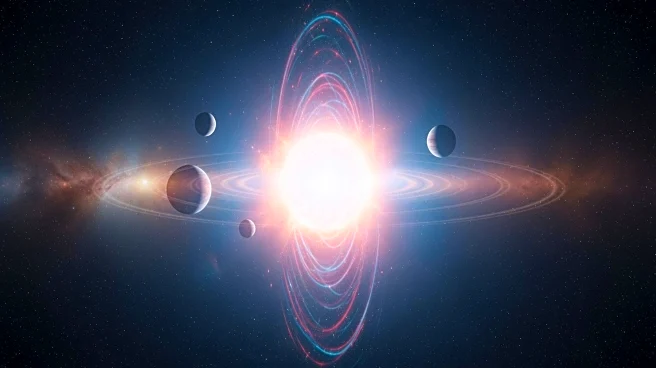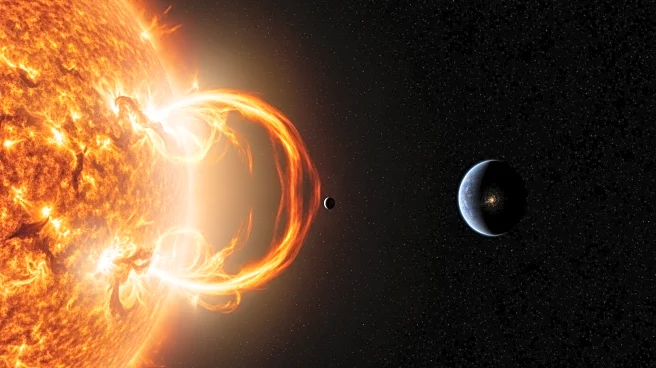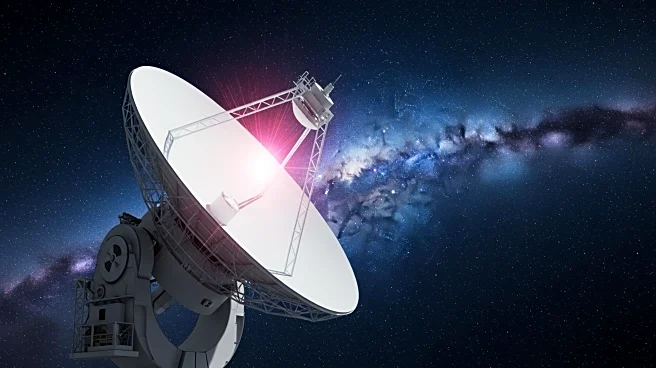What's Happening?
Astronomers have confirmed the first coronal mass ejection (CME) from a star other than the Sun, marking a significant milestone in astrophysical research. The event was detected by the Low Frequency Array
(LOFAR), a network of telescopes across Europe, and further verified by the XMM-Newton space telescope. The star, identified as StKM 1-1262, is an M dwarf known for its rapid rotation and intense magnetic activity. The CME was recorded moving at approximately 2,400 kilometers per second, a velocity that could strip away the atmosphere of any nearby planet, potentially compromising its habitability. This discovery raises concerns about the viability of life on planets orbiting M dwarfs, which are common targets in the search for habitable worlds due to their smaller size and lower luminosity.
Why It's Important?
The confirmation of a CME from a star other than the Sun has profound implications for the search for extraterrestrial life. M dwarfs, despite being prime targets for finding Earth-like exoplanets, may pose significant risks due to frequent and intense stellar activity. The ability of CMEs to strip atmospheres from planets in the habitable zone suggests that life-friendly conditions may be less common than previously thought. This discovery challenges existing models of planetary habitability and underscores the need for more comprehensive studies on stellar behavior. The findings could shift the focus of exoplanet research, emphasizing the importance of understanding space weather and its impact on potential life-supporting environments.
What's Next?
Researchers are looking forward to the completion of the Square Kilometer Array, a next-generation radio observatory being constructed in Australia and South Africa. This facility is expected to detect numerous extrasolar CMEs, providing a broader dataset to understand the frequency and impact of such events. The expanded research capabilities will help astronomers assess the threat posed by stellar outbursts and refine criteria for identifying habitable planets. As the search for Earth-like worlds continues, understanding the dynamics of stellar activity will be crucial in determining the likelihood of finding life beyond our solar system.
Beyond the Headlines
The discovery of a CME from StKM 1-1262 highlights the complex interplay between stellar activity and planetary habitability. It raises ethical and philosophical questions about the pursuit of life beyond Earth and the challenges faced in identifying truly habitable environments. The findings may prompt a reevaluation of the criteria used to define habitable zones and encourage the development of new technologies to mitigate the effects of space weather on potential life-supporting planets.











